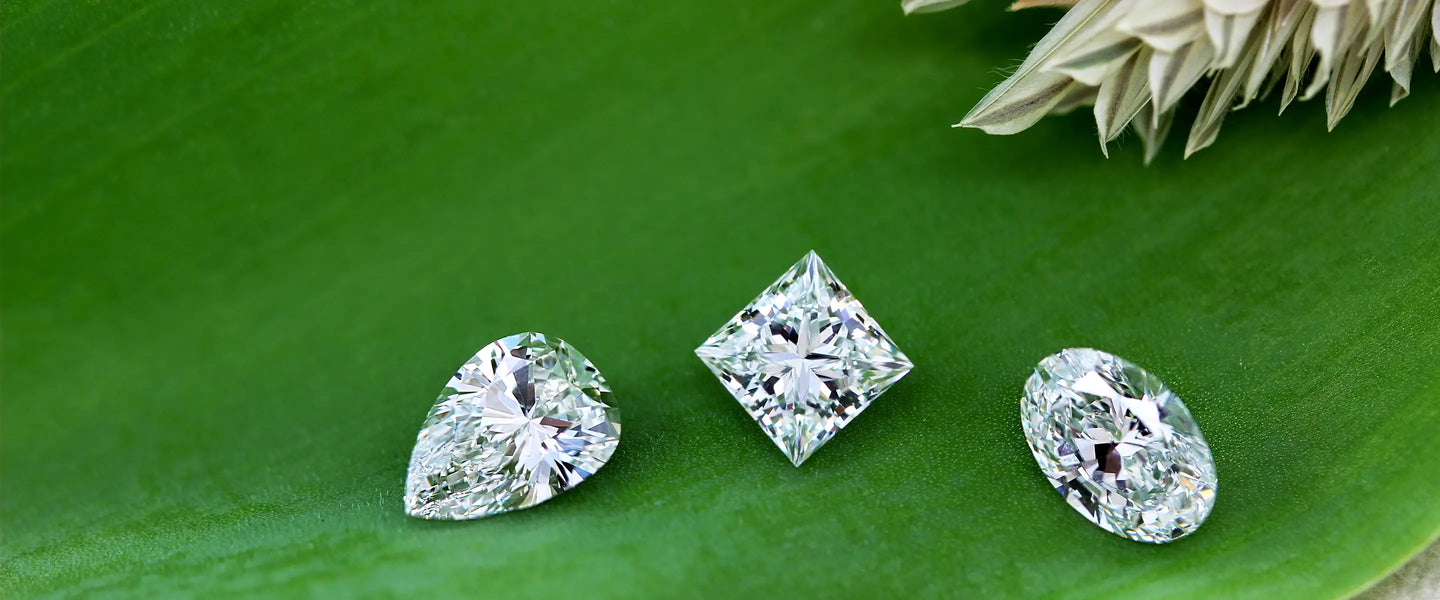Table of Contents
Introduction: The Rise of Lab-Grown Diamonds
In recent years, lab grown diamonds or mined have emerged as a popular alternative to traditional mined diamonds. With growing awareness of ethical sourcing and environmental concerns, many consumers are re-evaluating their choices when it comes to these sparkling gems. So, what’s the real difference between lab-grown and mined diamonds? Let’s dive into the world of diamonds and explore the distinctions, benefits, and what might be right for you.
Understanding Diamonds: The Basics
What Are Lab-Grown Diamonds?
Lab-grown diamonds, often referred to as synthetic or cultured diamonds, are real diamonds created in a laboratory setting. Using advanced technology, these diamonds mimic the natural conditions under which diamonds form deep within the Earth. They share the same chemical and physical properties as mined diamonds, making them indistinguishable to the naked eye.
What Are Mined Diamonds?
Mined diamonds, on the other hand, are extracted from the Earth’s crust through mining operations. These diamonds have taken millions of years to form and are often associated with complex supply chains that can involve ethical dilemmas. The process of mining diamonds is labor-intensive and can have significant environmental impacts.
The Process: How They’re Made
Creating Lab-Grown Diamonds
Lab grown diamonds are produced using two primary methods: CVD and HPHT.
CVD (Chemical Vapor Deposition)
In the CVD method, a small diamond seed is placed in a chamber filled with carbon-rich gas. The gas is ionized to create plasma, which allows carbon atoms to deposit onto the seed, gradually forming a diamond layer. This method can produce high-quality diamonds with fewer inclusions.
HPHT (High Pressure High Temperature)
HPHT diamonds are created by mimicking the natural diamond formation process. Carbon is subjected to extreme pressure and temperature, similar to conditions deep within the Earth. This method can produce larger diamonds and is particularly effective for creating colorless stones.
The Mining Process
Mined diamonds are extracted from the Earth through various mining techniques, including open-pit mining and underground mining. The process is labor-intensive and can involve significant environmental degradation, including deforestation and habitat destruction.
Comparing Quality: Lab-Grown vs. Mined
The 4 Cs of Diamonds
When it comes to quality, both lab-grown and mined diamonds are evaluated based on the 4 Cs: Cut, Color, Clarity, and Carat weight.
Cut
The cut of a diamond affects its brilliance and sparkle. A well-cut diamond reflects light beautifully, while a poorly cut one may appear dull. Both lab-grown and mined diamonds can achieve excellent cut grades.
Color
Diamonds are graded on a scale from D (colorless) to Z (light yellow). Lab-grown diamonds can often achieve higher color grades due to controlled growth conditions, making them appear more vibrant.
Clarity
Clarity refers to the presence of internal or external imperfections. Both types of diamonds can vary in clarity, but lab-grown diamonds are often less likely to contain inclusions due to the controlled environment in which they are created.
Carat Weight
Carat weight measures the size of the diamond. Both lab-grown and mined diamonds come in a variety of sizes, allowing consumers to choose based on preference and budget.
Cost Considerations
Price Differences
One of the most attractive aspects of lab-grown diamonds is their price. They are typically 20-40% less expensive than mined diamonds. This allows consumers to purchase larger or higher-quality stones for the same budget.
Value Retention
While mined diamonds have traditionally held their value well, the resale value of lab-grown diamonds can vary. As the market for lab-grown diamonds continues to grow, their long-term value retention is still being assessed.
Environmental Impact
Sustainability of Lab-Grown Diamonds
Lab-grown diamonds have a significantly lower environmental footprint compared to mined diamonds. The energy required for lab creation is less damaging to ecosystems, making them a more sustainable choice for environmentally-conscious consumers.
Impact of Diamond Mining
Diamond mining can lead to serious environmental degradation, including habitat destruction and pollution. The carbon footprint associated with mining is substantial, raising ethical concerns about the impact on local communities and ecosystems.
Ethical Considerations
Conflict Diamonds vs. Lab-Grown Options
The term “blood diamonds” refers to diamonds mined in war zones and sold to finance conflicts. Lab-grown diamonds eliminate this concern entirely, providing a guilt-free option for consumers who prioritize ethical sourcing.
Consumer Preferences: Trends and Insights
Market Growth for Lab-Grown Diamonds
The market for lab-grown diamonds is experiencing rapid growth. Consumers are increasingly drawn to their affordability, ethical sourcing, and environmental benefits. Many major jewelry retailers now offer lab-grown options alongside traditional mined diamonds.
Public Perception of Mined Diamonds
As awareness of the issues surrounding diamond mining rises, consumer perceptions are shifting. More people are considering lab-grown diamonds as a viable alternative, prompting mined diamond retailers to rethink their marketing strategies.
Conclusion: Making the Right Choice for You
When it comes down to it, the choice between lab-grown and mined diamonds is a personal one. Both options have their pros and cons, and understanding the differences can help you make an informed decision. If ethical considerations and affordability are high on your list, lab-grown diamonds might be the perfect fit for you. On the other hand, if you value tradition and the unique story behind a mined diamond, that could be your choice. Ultimately, what matters most is that your diamond—whether lab-grown or mined—represents your unique love story and the commitment you share. Happy diamond hunting!






